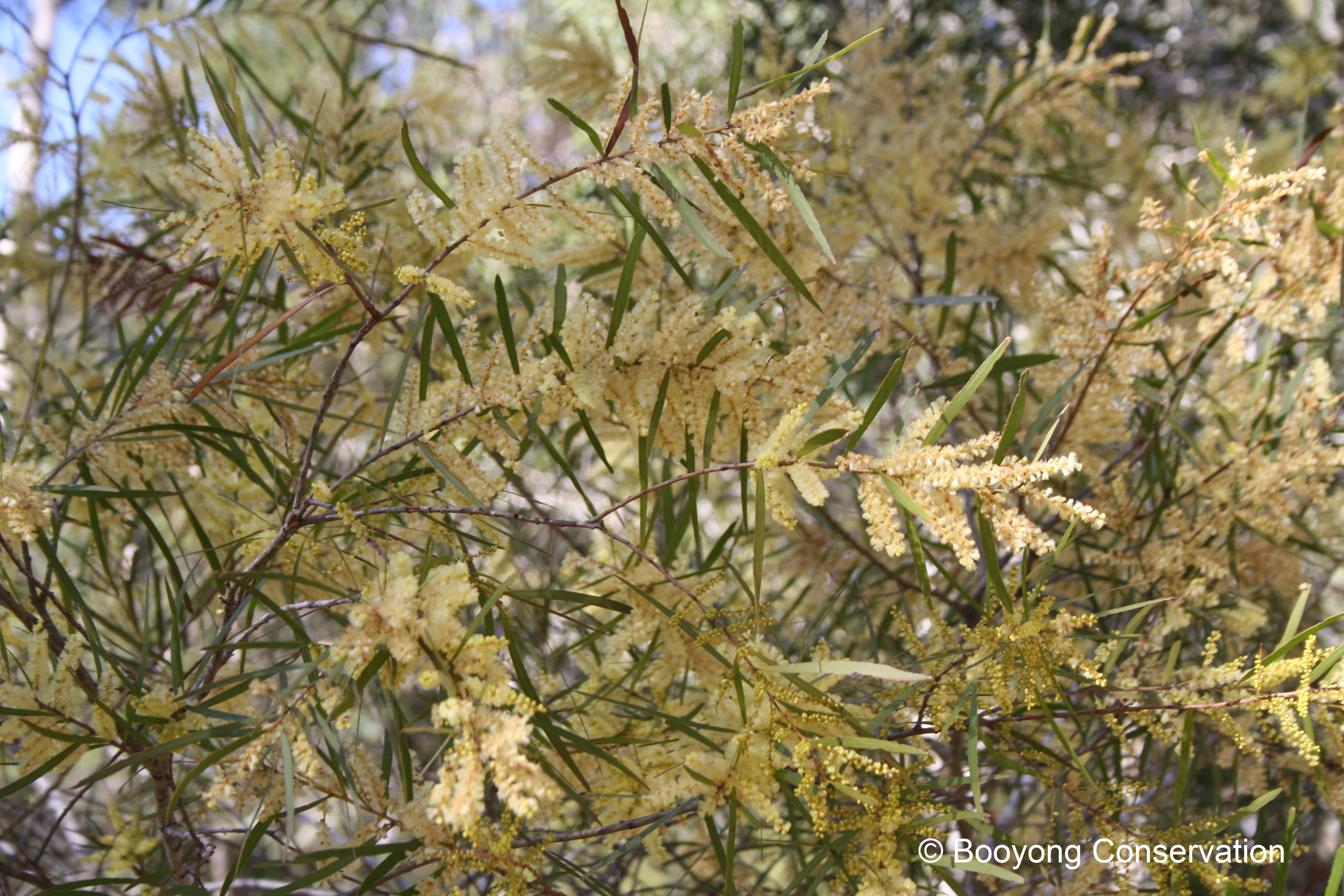Today, 1st September is Australian National Wattle Day and the first day of spring.
On a recent trip to Booyong I was stunned by the beautifully flowering wattle along the roadside as we drove past Buladelah and beyond. At the entrance I discovered this Acacia floribunda – White Sally Wattle.
 It’s a small tree that grows as a bushy shrub and flowers in late winter and early spring with pale yellow flowers. The flowers are sources of pollen for bees and seeds are eaten by parrots. Sugar gliders also enjoy the sap. Wattle trees are not generally considered valuable due to their short life and the debris created when they die – lots of cleaning up on properties. I find their beauty whilst flowering worth the work.
It’s a small tree that grows as a bushy shrub and flowers in late winter and early spring with pale yellow flowers. The flowers are sources of pollen for bees and seeds are eaten by parrots. Sugar gliders also enjoy the sap. Wattle trees are not generally considered valuable due to their short life and the debris created when they die – lots of cleaning up on properties. I find their beauty whilst flowering worth the work.
There are over 950 wattle species in Australia and the tree has a long history of being used by Indigenous Australians. In bush medicine they were used for medicines and inhalations to treat colds and flu, it was also made into poultices to treat headaches, relieve itchy skin and to create ointments for healing. None of the plant was wasted and the roots and wood would have been used to create weapons and other useful items. As with any plants, correct identification is essential and we don’t recommend you ingest the plants as they can be toxic.
Saving our trees have a wonderful and extensive article about Australian Wattle if you’d like to know more.
One species of wattle is the floral emblem of the Australian coat of arms. More information can be found on our Governments Parliament House Website.
